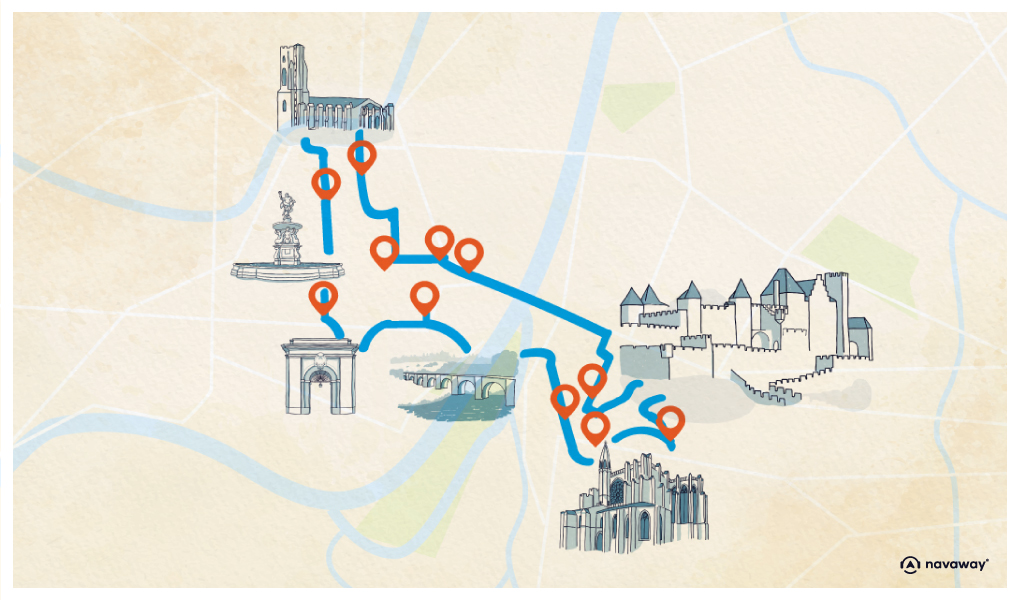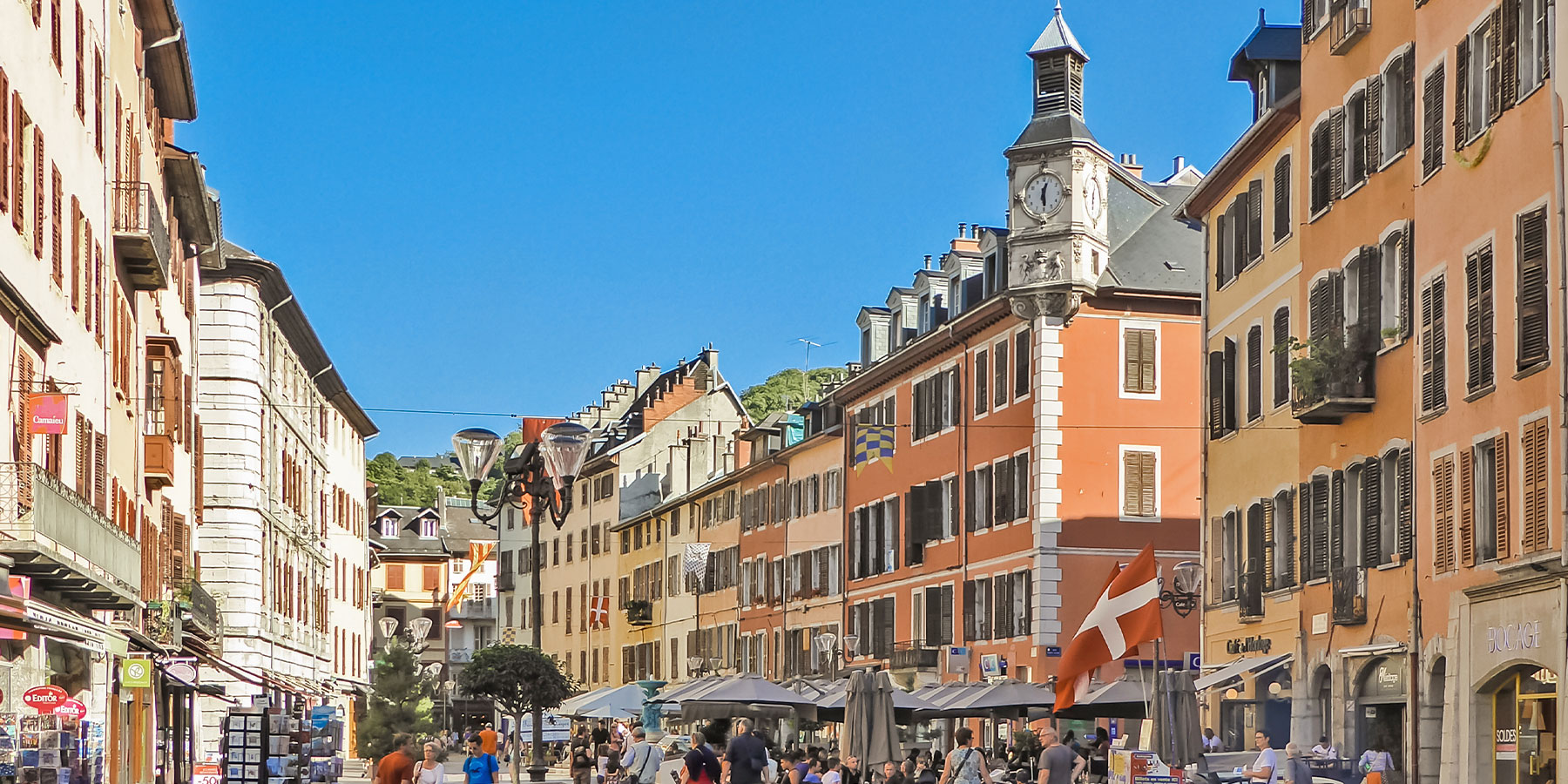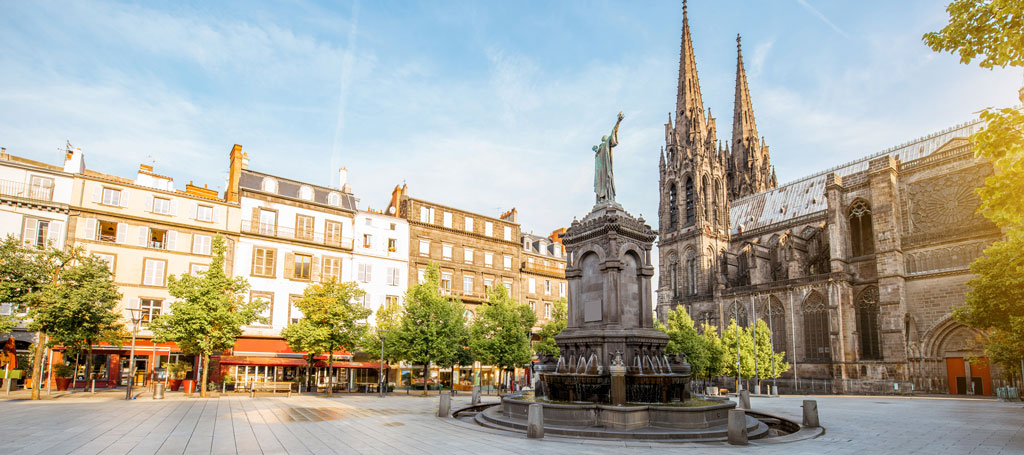
Bust of Lady Carcas

This point of interest is available as audio on the tour: Visit Carcassonne, A Citadel among the Clouds
What you’re looking at is a statue of great importance to Carcassonne. It welcomes visitors to the medieval citadel and depicts Lady Carcas, a woman said to have left her mark on the city’s history long ago. Let’s journey back to the 8th century, when Charlemagne was already laying siege to the city for five years to conquer it from the Saracens. FYI, back in medieval times, the Arab peoples of Muslim faith were refered to as Saracens. They were the ones to rule the city, with Lady Carcas’s husband, King Balaak, at the helm. The story goes that he was killed in battle against Charlemagne. With her husband gone, Lady Carcas took over the reins of the city, and put in place a strategy to save her people who were on the brink of starvation. They were down to just a bag of wheat and one single pig. Not exactly a feast for thousands. Time was of the essence, and the siege had to be lifted at all costs. So Lady Carcas got creative. First, she planted straw dummies behind the ramparts to deceive the attackers into thinking they were still numerous and ready to fight. She then stuffed the pig with all the wheat and threw it over the walls at Charlemagne’s army. When it landed, the animal’s belly burst open and boom – wheat everywhere! Charlemagne realized that his siege was pointless: he figured the soldiers inside were well-fed and in a position to fight, with enough provisions to sustain even their livestock. So he raised the siege and left. According to the legend, the victorious Lady Carcas proceeded to ring all the bells in the city to announce the end of the siege, and the fleeing soldiers of Charlemagne exclaimed “Carcas sonne!”, meaning “Carcass is ringing!”, hence the name of the city. Here’s the twist – this story might be totally made up. History tells us that Charlemagne’s father, Pepin the Short, had already taken the city back from the Saracens, so Charlemagne never even laid siege to Carcassonne. The legend probably popped up around the 16th century, and that’s when the statue of Lady Carcas was erected, as a symbol of resilience. The artist behind it remains unknown. This one here is a replica, by the way. The original is housed in the Count’s castle. Now that we’ve gotten the history lesson out of the way, let’s go see the citadel!


Discover Carcassonne with app
An interactive guide through the most beautiful streets, squares, and districts
27 fun audioguides full of historical facts, anecdotes, and legends





Comments